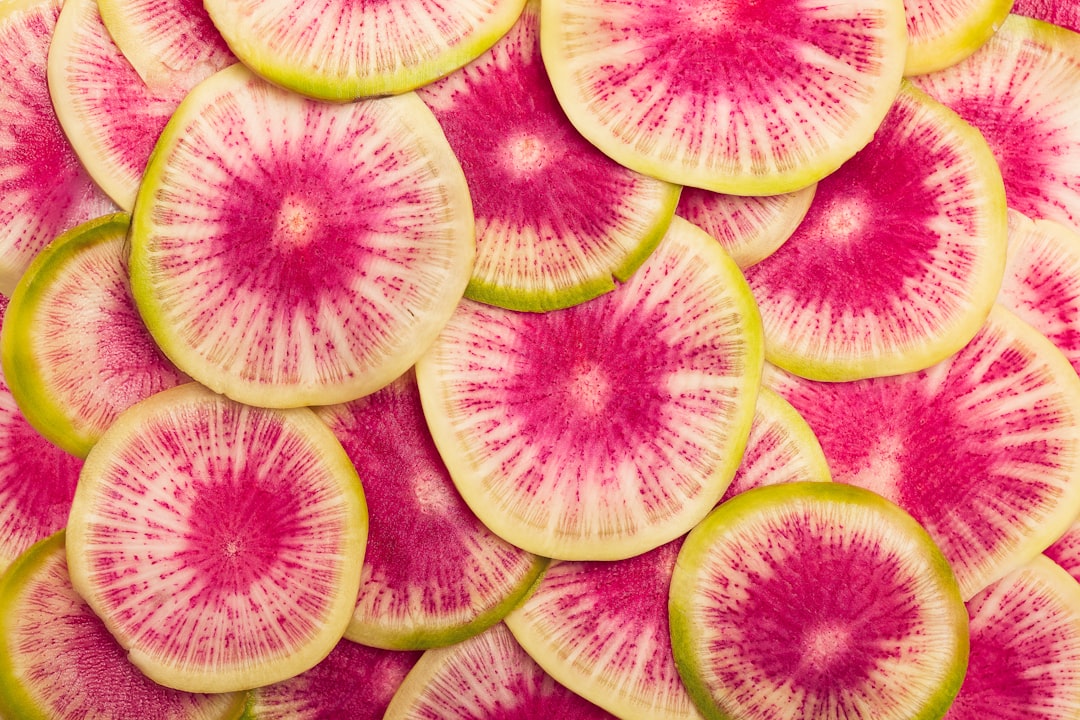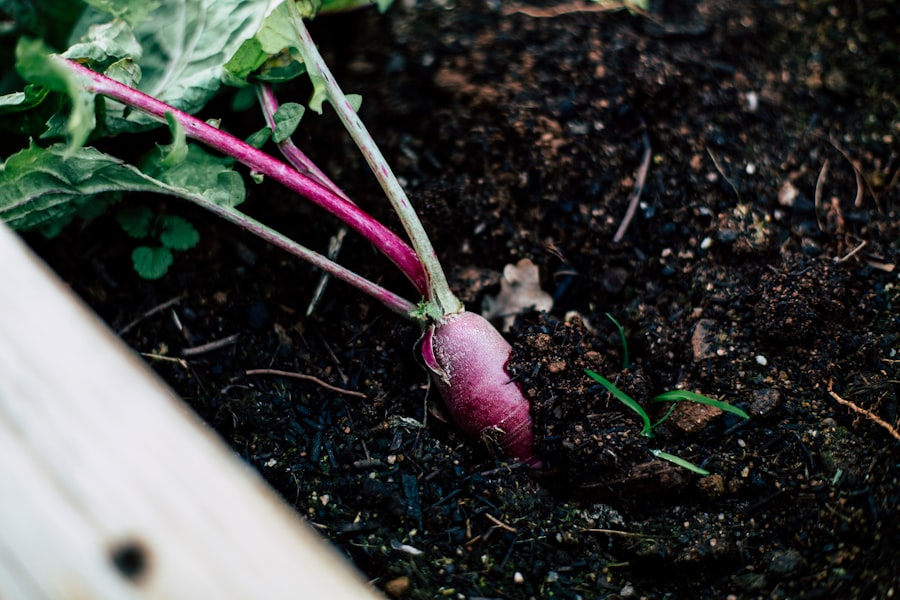Radish Growth: How Long to Harvest

Radishes are a versatile and easy-to-grow vegetable that can bring joy to any gardener. Not only are they delicious and nutritious, but they also have a relatively short growth cycle, making them a great choice for beginners or those with limited space. Understanding the growth cycle of radishes is essential for successful cultivation and a bountiful harvest.
Key Takeaways
- Radishes have a short growth cycle of 20-60 days, depending on the variety.
- Factors affecting radish growth and harvest time include temperature, soil quality, and watering.
- To optimize growth and yield, plant radishes in loose, well-draining soil and keep them consistently moist.
- Radish seeds typically germinate within 3-10 days, depending on the temperature and moisture level.
- Different radish varieties have varying harvest times, ranging from 20-60 days after planting.
Understanding the Growth Cycle of Radishes
The growth cycle of radishes can be divided into several stages: seed germination, leaf development, root formation, and maturity. Each stage is influenced by various factors such as soil quality, watering and fertilization, temperature and sunlight, as well as pests and diseases. By understanding these stages and the factors that affect them, gardeners can optimize their radish growth and yield.
Factors Affecting Radish Growth and Harvest Time
1. Soil quality and preparation: Radishes prefer loose, well-draining soil with a pH level between 5.8 and 6.8. Before planting, it is important to prepare the soil by removing any weeds or debris and adding organic matter to improve its fertility.
2. Watering and fertilization: Radishes require consistent moisture throughout their growth cycle. Overwatering can lead to rotting, while underwatering can result in stunted growth. Additionally, radishes benefit from regular fertilization with a balanced fertilizer to ensure healthy development.
3. Temperature and sunlight: Radishes thrive in cool weather conditions with temperatures between 50°F and 70°F (10°C to 21°C). They also require at least six hours of direct sunlight each day for optimal growth.
4. Pests and diseases: Common pests that can affect radish growth include flea beetles, aphids, and root maggots. Diseases such as damping-off, powdery mildew, and clubroot can also impact the health of radishes. Proper pest management and disease prevention techniques are crucial to ensure a successful harvest.
Planting Radishes: Tips for Optimal Growth and Yield
| Planting Radishes: Tips for Optimal Growth and Yield | |
|---|---|
| Soil pH | 6.0-7.0 |
| Planting Depth | 1/2 inch |
| Spacing | 2-4 inches apart |
| Days to Germination | 3-7 days |
| Days to Maturity | 20-60 days |
| Watering | Consistent moisture, but not waterlogged |
| Fertilizer | Low-nitrogen fertilizer applied at planting |
| Pests | Flea beetles, root maggots, aphids |
| Diseases | Clubroot, damping off, downy mildew |
| Harvesting | When roots are mature and firm to the touch |
1. Choosing the right location and time to plant: Select a location that receives full sun and has well-draining soil. Radishes can be planted as soon as the soil can be worked in early spring or in late summer for a fall harvest.
2. Preparing the soil and planting seeds: Prepare the soil by loosening it with a garden fork or tiller and removing any weeds or debris. Sow radish seeds directly into the soil, spacing them about 1 inch apart and covering them with a thin layer of soil.
3. Watering and fertilizing techniques: Water radishes regularly to keep the soil consistently moist but not waterlogged. Fertilize every two weeks with a balanced fertilizer to provide essential nutrients for growth.
4. Thinning and spacing: Once the radish seedlings have emerged, thin them out to ensure proper spacing. Radishes should be spaced about 2 inches apart to allow room for root development.
How Long Does it Take for Radishes to Germinate?
The germination process of radishes typically takes between 3 to 10 days, depending on various factors such as temperature, moisture, and seed quality. Radish seeds require consistent moisture and temperatures between 50°F and 70°F (10°C to 21°C) for optimal germination. Some varieties may germinate faster than others, so it is important to check the seed packet for specific information.
Different Varieties of Radishes and Their Harvest Time

There are many different varieties of radishes available, each with its own unique characteristics and harvest time. Some popular varieties include Cherry Belle, French Breakfast, and Daikon radishes.
Cherry Belle radishes are small, round, and bright red in color. They are ready to harvest in about 22 to 30 days from sowing. French Breakfast radishes have an elongated shape with a red top and white bottom. They are typically ready to harvest in about 24 to 28 days.
Daikon radishes are larger and have a long, cylindrical shape. They take longer to mature, usually around 50 to 60 days. It is important to choose the right variety based on your preferences and the time you have available for harvesting.
How to Tell When Radishes are Ready to Harvest
Radishes are typically ready to harvest when they reach their mature size and have a firm texture. Signs of maturity include a smooth skin, vibrant color, and a diameter of about 1 inch for round varieties or 2 inches for longer varieties.
To check if radishes are ready for harvest, gently pull on the leaves and see if they come out easily. If the leaves detach easily from the root, it is a good indication that the radish is ready to be harvested. It is important not to leave radishes in the ground for too long, as they can become woody and lose their crispness.
Harvesting Radishes: Tools and Techniques
Harvesting radishes is a simple process that requires minimal tools. All you need is a pair of gardening gloves and a garden fork or trowel.
To harvest radishes, gently loosen the soil around the base of the plant using the garden fork or trowel. Carefully lift the radish out of the ground, taking care not to damage the root or leaves. If the soil is dry, watering it beforehand can make it easier to remove the radish without breaking it.
Storing Radishes: Tips to Keep Them Fresh for Longer
To keep radishes fresh for longer, it is important to store them properly. Start by removing any excess soil from the radishes, but do not wash them as moisture can cause them to spoil faster. Trim off any greens, leaving about an inch of stem attached to the radish.
Radishes can be stored in the refrigerator for up to two weeks. Place them in a perforated plastic bag or wrap them in a damp paper towel to maintain moisture. Avoid storing radishes near fruits such as apples or pears, as they release ethylene gas, which can cause radishes to spoil faster.
Common Problems with Radish Growth and How to Solve Them
Despite their relatively easy cultivation, radishes can still face some common issues that can affect their growth and yield. Here are a few common problems and their solutions:
1. Bolting: Bolting occurs when radishes prematurely produce flowers and seeds instead of developing a large root. To prevent bolting, ensure that radishes are planted in cool weather conditions and provide consistent moisture.
2. Root maggots: Root maggots are small white larvae that feed on the roots of radishes. To prevent infestations, use row covers to protect young plants or apply an organic insecticide specifically designed for root maggots.
3. Damping-off: Damping-off is a fungal disease that causes seedlings to rot at the base and die. To prevent damping-off, ensure that the soil is well-draining and avoid overwatering. Additionally, use sterile potting soil or sterilize the soil before planting.
Enjoying the Fruits of Your Radish Garden
Growing radishes can be a rewarding experience for any gardener. Not only do they provide a delicious addition to salads and other dishes, but they also offer numerous health benefits. By understanding the growth cycle of radishes and implementing proper planting, care, and harvesting techniques, gardeners can enjoy a bountiful harvest of fresh and flavorful radishes.
Remember to experiment with different varieties and techniques to find what works best for you. Whether you have a large garden or just a small container, radishes can be grown successfully and bring joy to your gardening experience. So, get out there, plant some radishes, and enjoy the fruits of your labor!
If you’re curious about how long it takes for a radish to grow, you might find this article on Lawn World’s website interesting. They have a comprehensive sitemap that includes a variety of gardening topics, including information on radish cultivation. Check out their article on “Radish Growing Guide” to learn more about the ideal conditions, planting techniques, and estimated timeframes for radish growth. Happy gardening!
FAQs
What is the average time it takes for a radish to grow?
The average time it takes for a radish to grow is 3-4 weeks.
What factors affect the growth rate of radishes?
Factors that affect the growth rate of radishes include temperature, soil quality, moisture, and sunlight.
What is the best time of year to plant radishes?
The best time of year to plant radishes is during the cooler months of spring and fall.
How deep should radish seeds be planted?
Radish seeds should be planted about 1/2 inch deep in the soil.
How often should radishes be watered?
Radishes should be watered regularly, about once a week, to keep the soil moist but not waterlogged.
When are radishes ready to be harvested?
Radishes are ready to be harvested when they have reached their mature size, usually about 1-2 inches in diameter, which typically takes 3-4 weeks.



